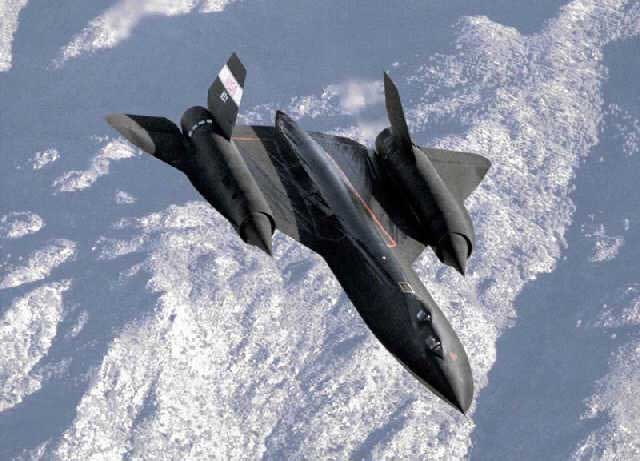
|
Lockheed Martin has begun work on a successor to the supersonic Blackbird SR-71 spy plane. The unmanned SR-72 will use an engine that combines a turbine and a ramjet to reach its top speed of Mach 6 - about 3,600mph (5,800km/h). Like its predecessor, the SR-72 will be designed for high-altitude surveillance but might also be fitted with weapons to strike targets. Lockheed said the aircraft should be operational by 2030. Jet engines The SR-72 is being developed at Lockheed Martin's Skunk Works R&D centre in California that designed and built the original Blackbird. That aircraft first flew in 1964 and was a mainstay of US Air Force spying and surveillance work until 1998. It typically flew at altitudes of 24,000m (80,000ft) and could reach speeds of Mach 3. In a blogpost about the SR-72, Lockheed Martin said the aircraft would operate at similar altitudes but would fly far faster. At Mach 6 the plane could travel the 3,500 miles (5,500km) from New York to London in less than an hour. While spy satellites can photograph enemy territory, the relatively long time it takes for them to be moved to a new orbit so they pass over a target can limit their usefulness. By contrast, wrote Lockheed Martin, the SR-72 "would be so fast, an adversary would have no time to react or hide". For the SR-72, Lockheed Martin is drawing on work done on the Falcon HTV-2 hypersonic technology vehicle. This is a test-bed for the futuristic technologies needed to support safe hypersonic flight and cope with the extreme conditions encountered by any object flying at such a speed. For instance, on one test flight of the HTV-2, the aircraft hit a top speed of Mach 20 and its flight surfaces reached 1,927C (3,500F). To reach Mach 6, the SR-72 will use an engine that acts like a normal jet turbine until speeds of Mach 3 are reached but which then operates like a ramjet to accelerate beyond that. "Speed is the next aviation advancement to counter emerging threats in the next several decades," said Brad Leland, Lockheed Martin's hypersonic programme manager on the blog. "The technology would be a game-changer in theatre, similar to how stealth is changing the battlespace today." |
據(jù)英國廣播公司等媒體11月4日報(bào)道,美國國防工業(yè)巨頭洛克希德已經(jīng)著手打造將以六倍音速飛行的新一代無人偵察機(jī)“黑鳥之子”——SR-71“黑鳥”間諜飛機(jī)的下一代。 洛克希德表示,第二代“黑鳥”將于2030年投入使用,以速度而非隱形能力取勝。與其前任一樣,SR-72間諜機(jī)既能用于高空偵查和監(jiān)視,也能裝配其他武器用于打擊目標(biāo)。 60年代初,在U-2偵察機(jī)在蘇聯(lián)上空被地對空導(dǎo)彈擊落后,洛克希德開始研制第一代“黑鳥”。1976年,美國空軍飛行員駕駛“黑鳥”不到兩個(gè)小時(shí)便從紐約飛抵倫敦,飛行速度超過3馬赫,創(chuàng)下世界紀(jì)錄。 第一代“黑鳥”直到1998年一直為美國空軍偵查和監(jiān)視行動(dòng)的中堅(jiān)力量。它能翱翔在2.4萬米的高空,飛行速度達(dá)到3馬赫。不僅比地對空導(dǎo)彈飛的更快,“黑鳥”還可以通過低空飛行規(guī)避敵方雷達(dá)。在建造的32架“黑鳥”偵察機(jī)中,12架因事故折戟沉沙,但無一架毀于敵軍火力。 洛克希德·馬丁強(qiáng)調(diào),無人駕駛的新一代“黑鳥”繼承上一代的飛行高度,但能飛得更快,最高速度可達(dá)6馬赫“極超音速”,約為5,800公里/小時(shí),為SR-71速度的兩倍,堪稱美軍偵察和突襲奇兵。 “極超音速飛機(jī),外加極超音速導(dǎo)彈,不用一小時(shí)即可打擊任何跨大洲目標(biāo),”洛克希德·馬丁公司高超聲速經(jīng)理布拉德·利蘭說,“為應(yīng)對未來數(shù)十年將產(chǎn)生的威脅與挑戰(zhàn),我們需要提高飛行速度。正如昨日的隱身技術(shù)改變今日的戰(zhàn)場一樣,今日的技術(shù)變革將改變明日的戰(zhàn)場規(guī)則。” 間諜衛(wèi)星雖然也能拍攝敵方領(lǐng)土,但由于需要花較長時(shí)間將他們移入新軌道以監(jiān)視整個(gè)目標(biāo),因此間諜衛(wèi)星的使用常常受限。SR-72間諜機(jī)則不同,其飛行速度之快,以致于敵人沒有時(shí)間反應(yīng)或躲藏。 相關(guān)閱讀 (譯者 衣其_Ella 編輯 Julie) |
